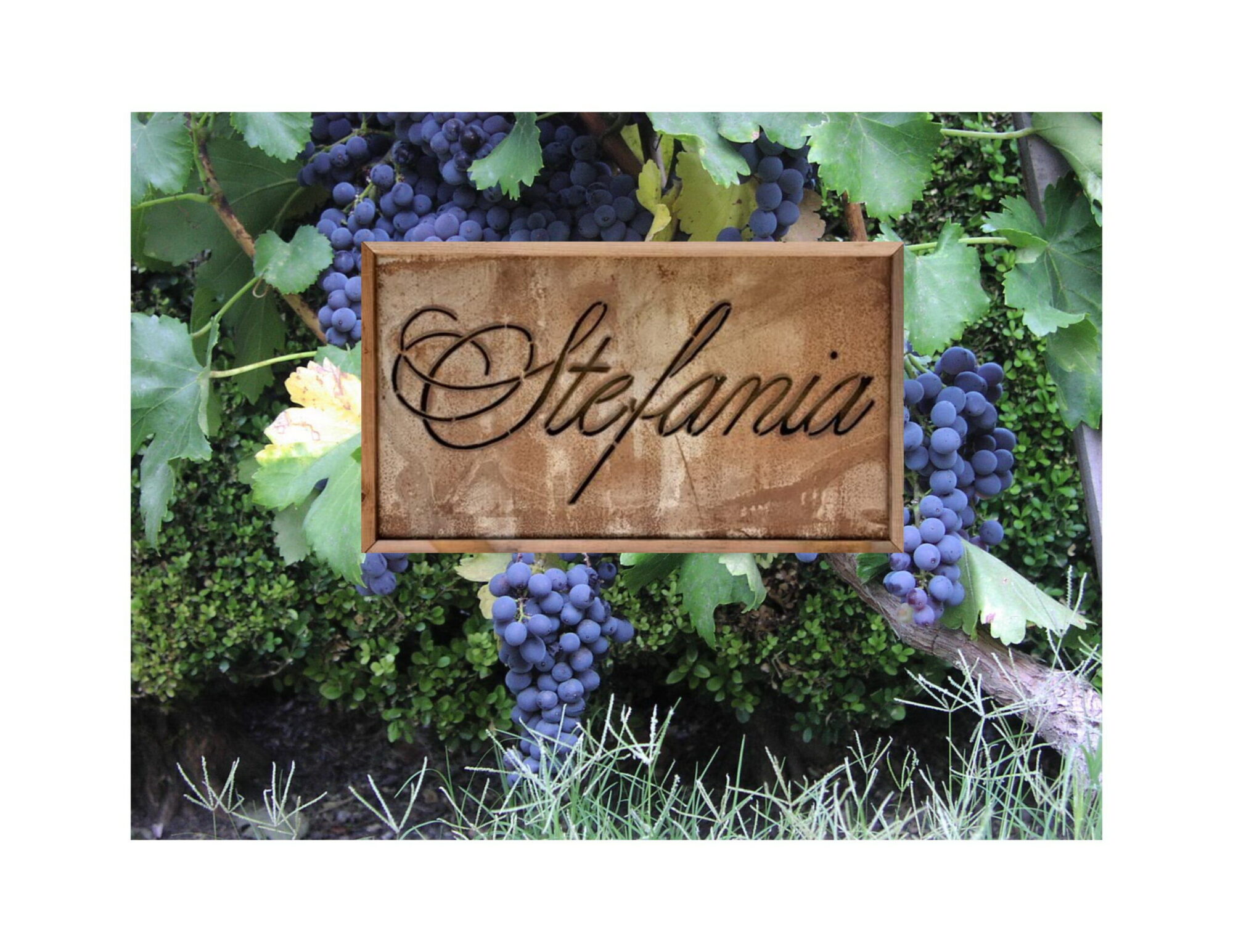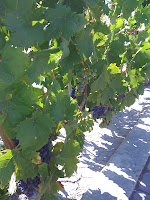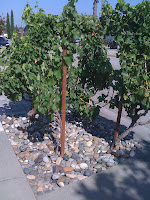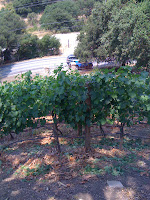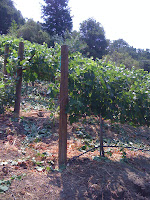The worst, and I mean very worst by a good length, task we have to do every year is bird netting. Each August the grapes start to turn colors and finally add sugar and flavor.
 The picture above shows Pinot Noir grapes at the Woodruff Family vineyard. The grapes are starting to turn pink, then red. When this happens, the birds start to feast on the grapes.
The picture above shows Pinot Noir grapes at the Woodruff Family vineyard. The grapes are starting to turn pink, then red. When this happens, the birds start to feast on the grapes.
The only way to keep the birds out is to net the entire plant. I’m often asked about using noise makers, scarecrows, or the shiny tape people see in vineyards. The thing is, birds are pretty smart. The shiny tape only works on migrating birds. The glitter and color keeps them from landing in the vineyards. For birds who have been hanging around all year, the glittery tape makes a nice colorful addition to their nest building. They will remove it from the plants and use it to build nests.
Noisemakers work for a short time, but the birds soon figure out there is no real threat and learn to ignore it. Usually your neighbors learn to call the local police and complain faster than the birds learn to ignore the noise, but in either event, the results are the same.
Other sight devices like owls and scarecrows have the same effect. They work for a short time, even if you move them daily, but the birds figure it out well before harvest.
 So we net. The birds will actually attack the nets trying to figure out a way in, so we have to make sure the nets are sealed up tight, and then we inspect them regularly through harvest. Above you can see Millie pulling the netting as Herrardo (Jerry B.) drives the tractor. The nets sit in a special bucket and a pulley system moves them over the plants. Two people have to then spread the nets over the plants.
So we net. The birds will actually attack the nets trying to figure out a way in, so we have to make sure the nets are sealed up tight, and then we inspect them regularly through harvest. Above you can see Millie pulling the netting as Herrardo (Jerry B.) drives the tractor. The nets sit in a special bucket and a pulley system moves them over the plants. Two people have to then spread the nets over the plants.

There are a lot of reasons we all hate this tasks so much. First of all, most of it has to be done by hand. Even in the vineyards with tractors we have to pull, tie up and secure the nets by hand. This is a terrible dirty job. The nets have sat in storage all year and they are filthy, dirty and grimy. Your hands are black by the end of the day. Add to that, it’s August. It’s hot, very hot, and you are in the sun all day. You can’t really wear good cover, or even much of a hat. Anything with buttons, or oversize will get snagged in the nets, so you have to stick with t-shirts, simple hats and maybe a mask. You need the mask because by August the vineyards are super dusty. All things together, it makes for a tough bunch of days.
 Here you get a close up of the process. Millie is taking another batch of nets to load up and Jerry B. is running the net through the pulley. Jerry drives the tractor while Millie and I pull the nets. Stefania then comes along behind us and ties the nets up under the plants. During the week, Jerry’s wife does the tie up and his brother helps with the net pulling.
Here you get a close up of the process. Millie is taking another batch of nets to load up and Jerry B. is running the net through the pulley. Jerry drives the tractor while Millie and I pull the nets. Stefania then comes along behind us and ties the nets up under the plants. During the week, Jerry’s wife does the tie up and his brother helps with the net pulling. 